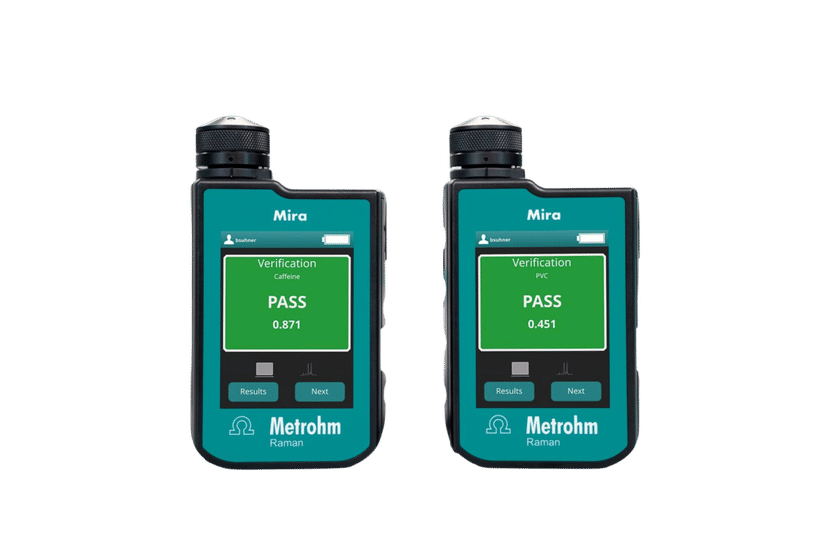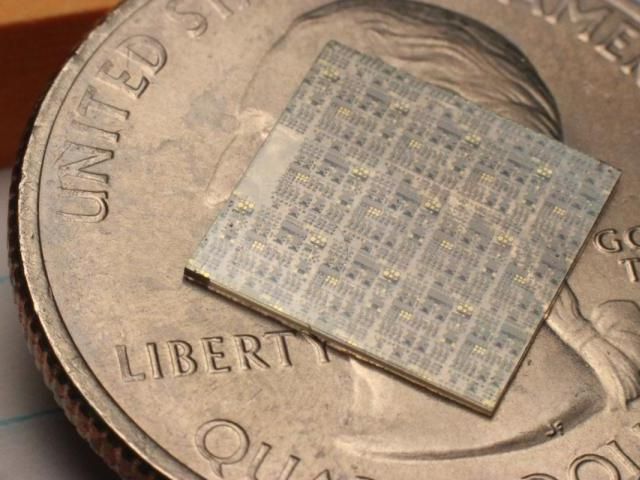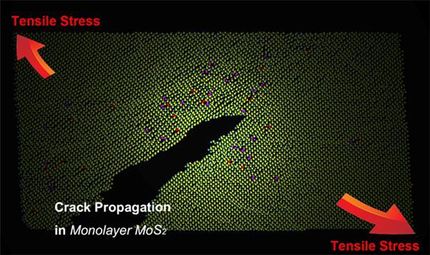Scientists capture colliding organic nanoparticles on video for first time
A Northwestern University research team is the first to capture on video organic nanoparticles colliding and fusing together. This unprecedented view of "chemistry in motion" will aid Northwestern nanoscientists developing new drug delivery methods as well as demonstrate to researchers around the globe how an emerging imaging technique opens a new window on a very tiny world.
This is a rare example of particles in motion. The dynamics are reminiscent of two bubbles coming together and merging into one: first they join and have a membrane between them, but then they fuse and become one larger bubble.
"I had an image in my mind, but the first time I saw these fusing nanoparticles in black and white was amazing," said professor Nathan C. Gianneschi, who led the interdisciplinary study and works at the intersection of nanotechnology and biomedicine.
"To me, it's literally a window opening up to this world you have always known was there, but now you've finally got an image of it. I liken it to the first time I saw Jupiter's moons through a telescope. Nothing compares to actually seeing," he said.
Gianneschi is the Jacob and Rosaline Cohn Professor in the department of chemistry in the Weinberg College of Arts and Sciences and in the departments of materials science and engineering and of biomedical engineering in the McCormick School of Engineering.
The study, which includes videos of different nanoparticle fusion events, will be published by the Journal of the American Chemical Society.
The research team used liquid-cell transmission electron microscopy to directly image how polymer-based nanoparticles, or micelles, that Gianneschi's lab is developing for treating cancer and heart attacks change over time. The powerful new technique enabled the scientists to directly observe the particles' transformation and characterize their dynamics.
"We can see on the molecular level how the polymeric matter rearranges when the particles fuse into one object," said Lucas R. Parent, first author of the paper and a National Institutes of Health Postdoctoral Fellow in Gianneschi's research group. "This is the first study of many to come in which researchers will use this method to look at all kinds of dynamic phenomena in organic materials systems on the nanoscale."
In the Northwestern study, organic particles in water bounce off each other, and some collide and merge, undergoing a physical transformation. The researchers capture the action by shining an electron beam through the sample. The tiny particles -- the largest are only approximately 200 nanometers in diameter -- cast shadows that are captured directly by a camera below.
"We've observed classical fusion behavior on the nanoscale," said Gianneschi, a member of Northwestern's International Institute for Nanotechnology. "Capturing the fundamental growth and evolution processes of these particles in motion will help us immensely in our work with synthetic materials and their interactions with biological systems."
Topics
Organizations
Other news from the department science
These products might interest you

NANOPHOX CS by Sympatec
Particle size analysis in the nano range: Analyzing high concentrations with ease
Reliable results without time-consuming sample preparation

Eclipse by Wyatt Technology
FFF-MALS system for separation and characterization of macromolecules and nanoparticles
The latest and most innovative FFF system designed for highest usability, robustness and data quality

DynaPro Plate Reader III by Wyatt Technology
Screening of biopharmaceuticals and proteins with high-throughput dynamic light scattering (DLS)
Efficiently characterize your sample quality and stability from lead discovery to quality control

Get the chemical industry in your inbox
By submitting this form you agree that LUMITOS AG will send you the newsletter(s) selected above by email. Your data will not be passed on to third parties. Your data will be stored and processed in accordance with our data protection regulations. LUMITOS may contact you by email for the purpose of advertising or market and opinion surveys. You can revoke your consent at any time without giving reasons to LUMITOS AG, Ernst-Augustin-Str. 2, 12489 Berlin, Germany or by e-mail at revoke@lumitos.com with effect for the future. In addition, each email contains a link to unsubscribe from the corresponding newsletter.
Most read news
More news from our other portals
Last viewed contents
BASF and Sinopec complete second phase of Nanjing investment, announce new plans for expansion - New acrylic acid plant to be established
GPC Biotech announces two milestones in expanded anti-microbial alliance with Altana Subsidiary Byk Gulden
ASTM International Declarable Substances Committee Approves First Test Method

BASF Group: Strong performance in Q4 2020 due to higher volumes and prices - Bonus for employees as a sign of recognition and appreciation

MIRA P Basic | Raman spectrometers | Metrohm





























































